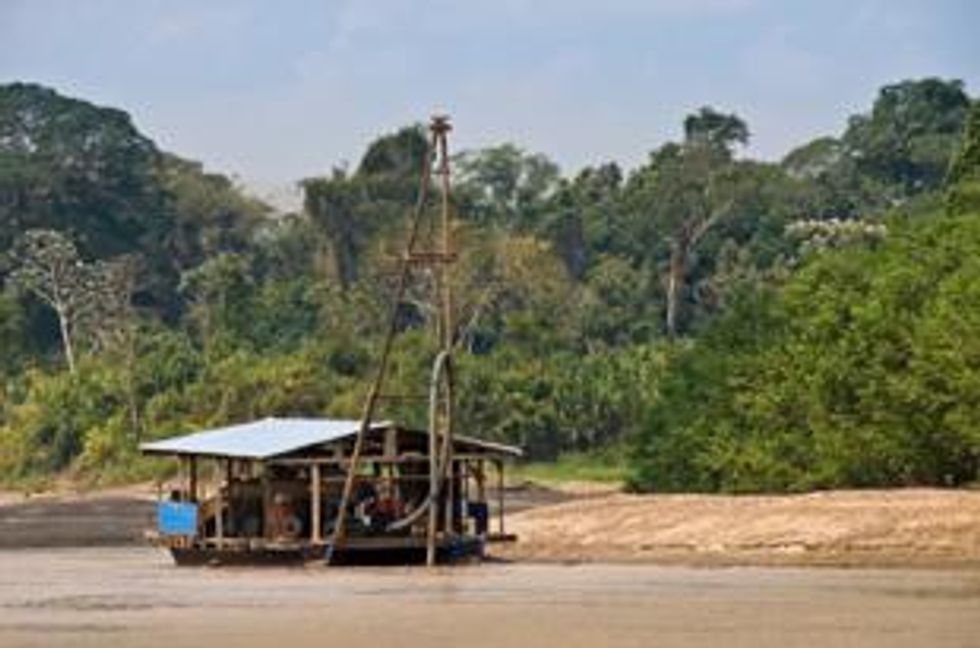Newmont to Pay $2 Billion in Taxes For Peru’s Conga Mine After Protests
Newmont Mining Corp said on January 5 it would pay more than $2 billion in taxes over the life of its proposed Conga mine inPeru after violent protests by residents and local politicians in the Cajamarca region — where the operation is located — since November. The protestors claim the Colorado gold miner’s activities will taint their water and affect a major aquifer.
By Karan Kumar – Exclusive to Gold Investing News
The world’s second largest gold produce0r, Newmont Mining Corp (NYSE:NEM), will pay more than $2 billion in taxes over the life of its proposed Conga mine in Peru after violent protests by residents and local politicians in the Cajamarca region suspended operations in November. The protesters claim the Colorado gold miner’s activities will taint their water and affect a major aquifer.The $4.8 billion Conga mine, Peru’s biggest investment project, is located 24 kilometers northeast of Newmont’s Yanacocha gold mine in the region. The $2 billion in taxes will come on top of its community investment programs in the region. Newmont halted operations at its Conga venture last month after the protests. Several other miners, such as Anglo American Plc, Southern Copper Corp, Bear Creek Mining Corp and Rio Tinto Plc have also either cut back investment in Peru or halted projects in the region.
Conga is part of Newmont’s strategic plan to reach 7 million ounces of gold and 400 million pounds of copper by 2017. With an expected mine life of approximately 19 years, Newmont and its Peruvian partner Compania de Minas Buenaventura want to leverage its existing Yanacocha to develop Conga’s potential.
In its statement on January 5, Newmont said that the Conga project “would replace four lagoons with four engineered reservoirs,” which would offer residents a reliable, year-round water supply, “something they don’t currently have due to the lagoons not continuously overflowing into the natural streams during the dry season.”
But protests have soured the operation. Peru’s national government, which has $50 billion in mining and oil investment lined up for the next decade, is concerned that some 200 social and environmental conflicts nationwide could prevent the investment from taking off. The previous Peruvian government approved the Conga project in October 2010 and Newmont had planned to start construction of the process plant in the first half of 2012, with production expected in late 2014 to 2015.
An article published on Mineweb this month said the Conga project holds attributable reserves of 6.1 million ounces of gold and 1.7 billion pounds of copper and is believed to have a potential to add as much as 50 percent to current gold and copper reserves over the next 10 years. Yan Chen, Hong Kong-based head of metals and mining for Standard Chartered, told Bloomberg in July that he expects gold to rise to as much $2,000 an ounce in 2014 and soar to $5,000 an ounce by 2020 on slowing production growth and increasing demand from India and China.
Demonstrators in Cajamarca resumed their protests on January 2 after the national government imposed a state of emergency to restore law and order following the November protests. To pacify anti-mining protesters, Peru’s government said this month companies must set up an environmental contingency fund to compensate for damages and a social inclusion fund to cover health, education and other infrastructure projects.
“The decision to create the two funds is part of the government’s efforts to win over local communities in mining producing areas,” Carlos Caicedo , head of Latin American forecasting at Exclusive Analysis Ltd., a UK-based specialist intelligence firm, told Gold Investing News. “By creating the two funds the authorities are trying to pre-empt protests and reassure local communities that mining would bring significant benefits to them.
Peru’s President Ollanta Humala, who took power after running as a moderate leftist in June 20112, has “turned out to be very supportive of the mining industry. This is because the bulk of the revenues he needs to implement his ambitious poverty reduction programs would come from mining,” Caicedo said.
The Peruvian government has tried many methods to eliminate opposition to Newmont’s mine, including a promise of an environmental plan, demonizing protesting leaders and filing a lawsuit against Gregorio Santos, governor of the Cajamarca region, who has helped lead the protests.
“The relatively low turnout at the (January 2) protest suggests, however, that Santos does not have the support of the majority of Cajamarca’s population,” Caicedo added. “Delays to the (Newmont) project are highly likely … however, outright cancellation is unlikely. Santos’ isolation means that he will be unable to mobilize the entire region against the project. This and the strong commitment of President Humala to see the project through are indicators of its viability.”






